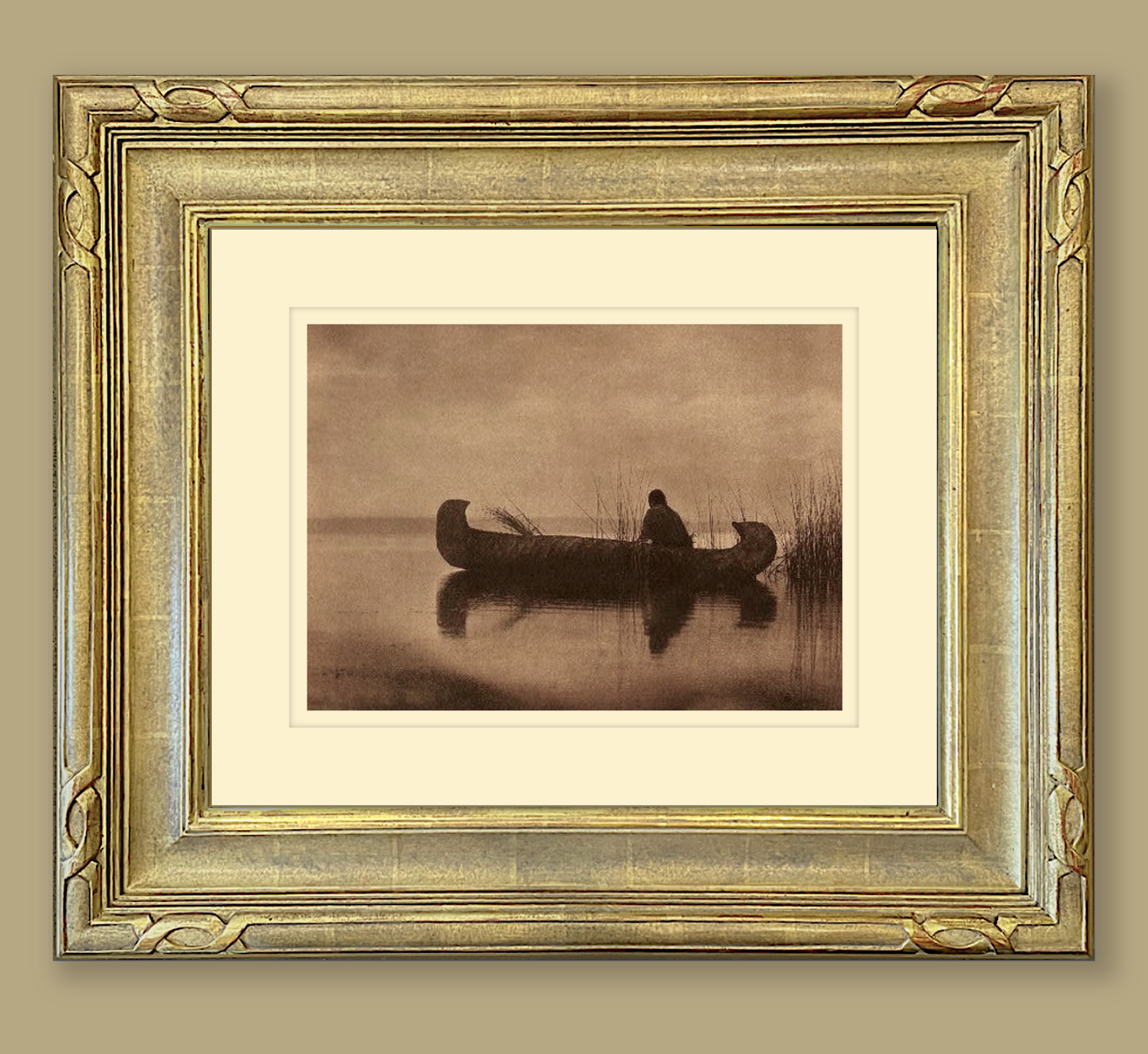

Title: Kutenai Duck Hunter 1910 by photographer Edward S. Curtis
Shipping: $29.00
Artist: N/A
Period: 20th Century
History: Art
Origin: North America > United States
Condition: N/A
Item Date: N/A
Item ID: 610
By the photographer Edward S. Curtis (1868-1952), Kutenai Duck Hunter, original plate 249 from The North American Indian. This photogravure, printed on Van Gelder paper, includes Curtis' credit, title, date, plate number, and the printer's credit on the recto. Dated 1910, Kutenai Duck Hunter stands as one of Edward Curtis' most iconic images, alongside Canyon de Chelly and Bear's Belly. The photograph depicts a lone hunter searching for ducks. According to Curtis, "In the gray dawn of a foggy morning, the hunter crouches in his canoe among the rushes, waiting for the waterfowl to come within range," as described in The North American Indian. Inhabiting a mountainous region dotted with lakes and crossed by long, winding rivers, the Kutenai naturally became expert boatmen. The common form of their craft was made of pine or spruce bark laid over a framework of split fir. The boat was sharp at both bow and stern, a design still seen among the Kalispel people. This information is drawn from Curtis' The North American Indian, Volume VII.
Edward S. Curtis (1868-1952) was an American photographer and ethnologist renowned for his extensive work documenting the lives and cultures of Native American tribes in the early 20th century. Beginning his ambitious project in 1906 with the support of financier J.P. Morgan, Curtis spent over 20 years photographing and recording the customs, traditions, and everyday life of more than 80 tribes. His work, culminating in the monumental 20-volume series "The North American Indian," is considered one of the most significant ethnographic records of Native American cultures. Curtis's dedication to preserving this heritage has left an enduring legacy in both photography and anthropology.